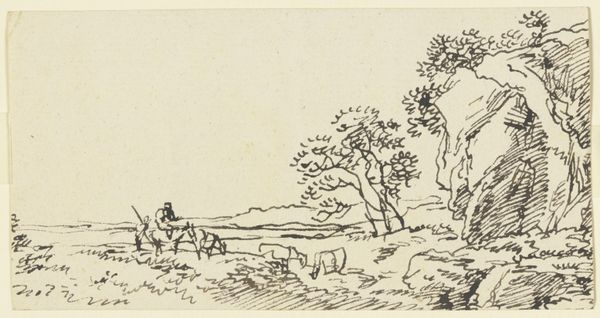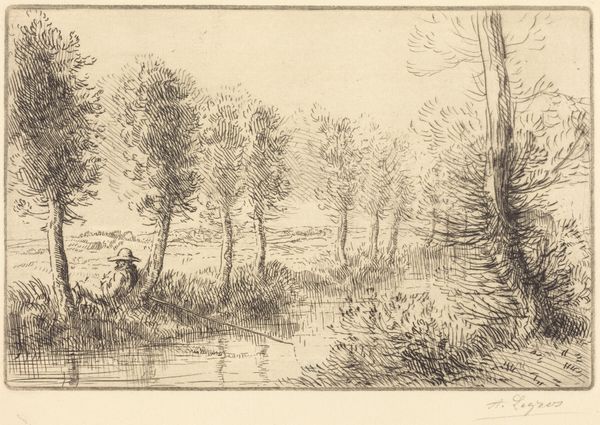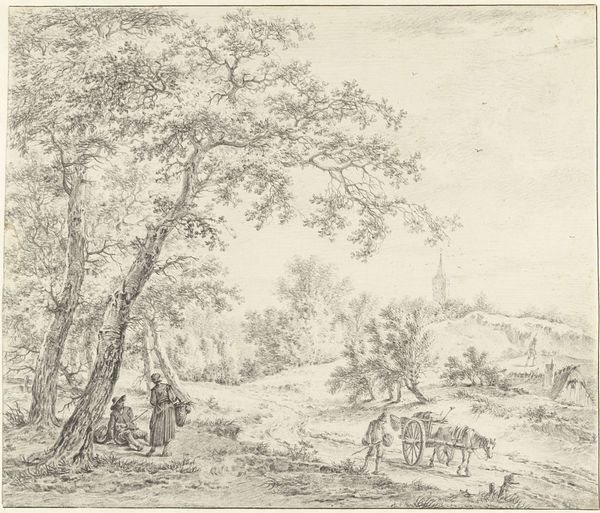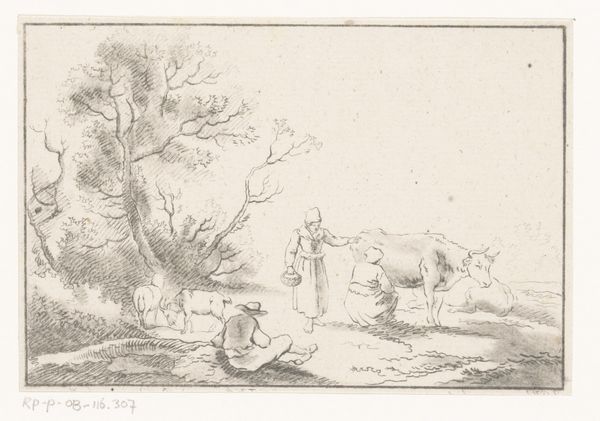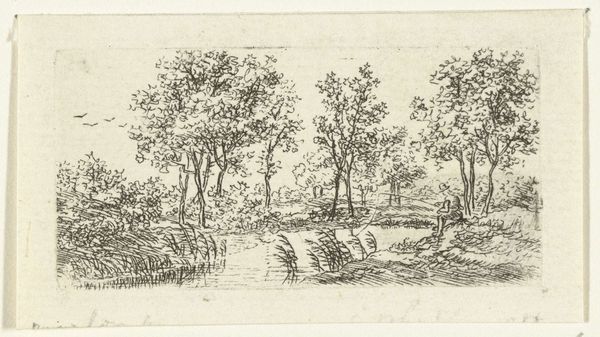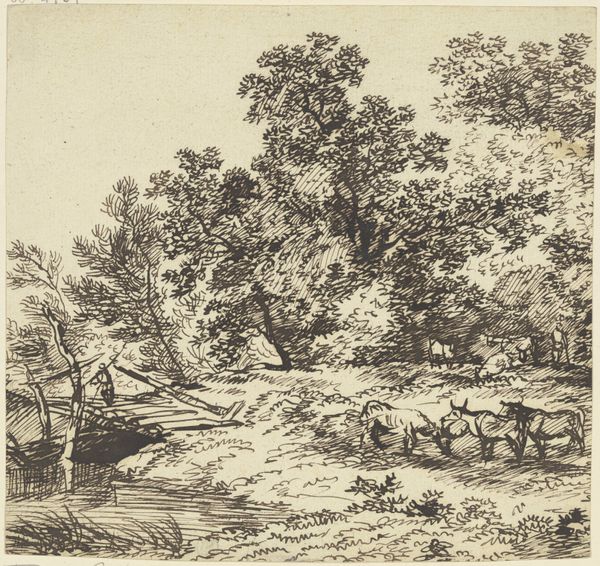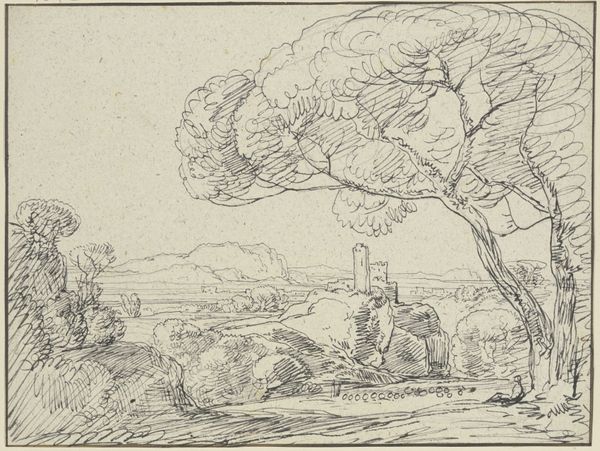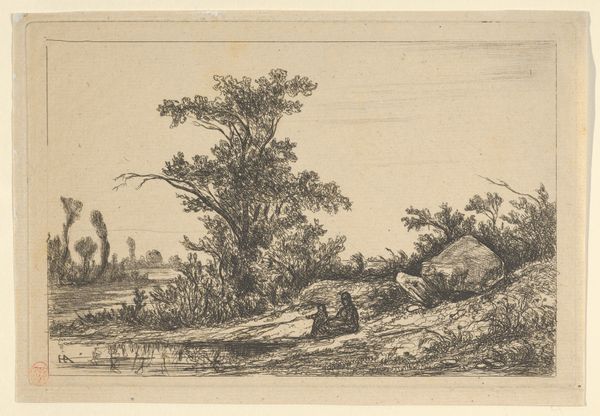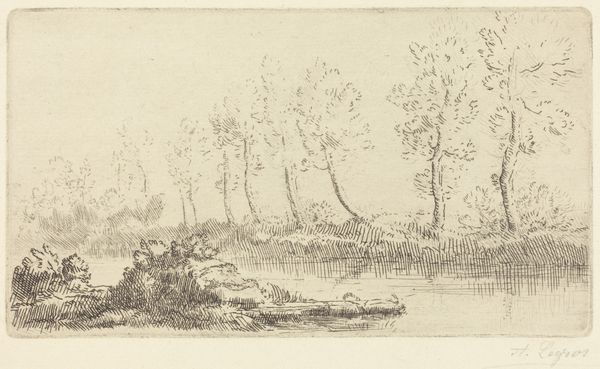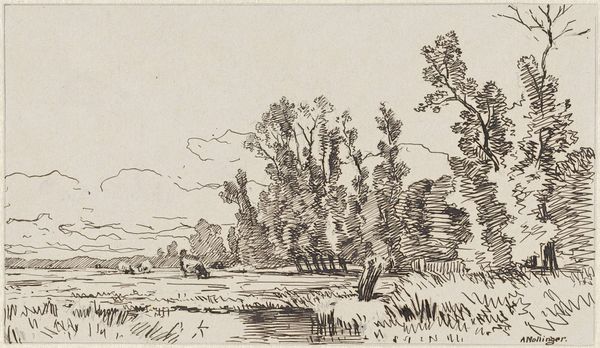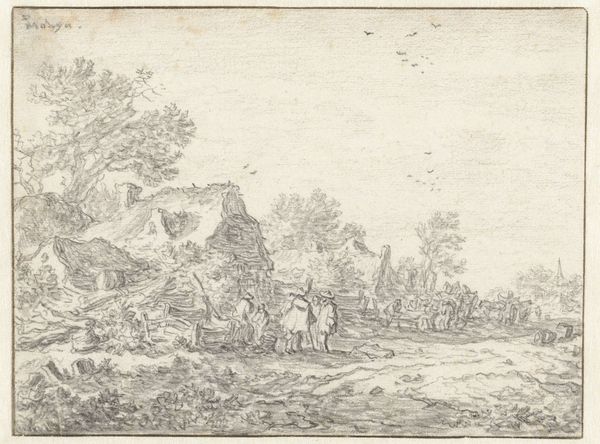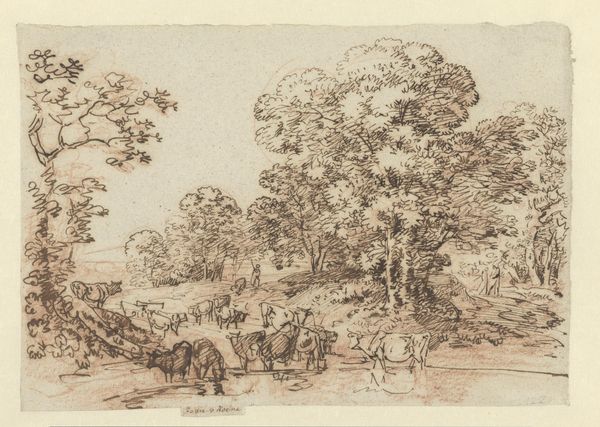
drawing, paper, ink
#
drawing
#
dutch-golden-age
#
landscape
#
figuration
#
paper
#
ink
#
genre-painting
#
realism
Dimensions: height 148 mm, width 191 mm
Copyright: Rijks Museum: Open Domain
Editor: Here we have Jan van Almeloveen’s "Three Men by a Bridge," created sometime between 1682 and 1685. It's an ink drawing on paper. It feels very much of its time, but also, dare I say, kind of mundane? What strikes you about it? Curator: I'm immediately drawn to the labor implied. Consider the Dutch Golden Age: wealth was accumulating, yes, but at what cost? Who built this rickety bridge? And who were these figures—travelers? Laborers? Their clothes look quite worn. This seemingly simple landscape masks a deeper story of material conditions. Editor: So you see the drawing less as a depiction of a place, and more as a kind of... social document? Curator: Exactly. Look at the raw quality of the ink strokes. Almeloveen isn't interested in idealized beauty. He’s capturing the reality of the working landscape, a place where people and resources are in constant interaction. What does the "mundane" say about how society values the laboring body? Editor: That's interesting, I hadn’t considered the roughness of the line work as a deliberate choice. I had assumed a certain lack of refinement. Curator: Refinement can be deceptive. Consider what it hides. Here, the visible process is the point. Ink, paper, hand – all bear witness to the labor of representation. Editor: So by focusing on the making, the materials themselves, you're pulling back a curtain on a larger economic picture? Curator: Precisely. This drawing becomes a lens through which we can examine the material underpinnings of the Dutch Golden Age, questioning who benefited from this prosperity, and at whose expense. Editor: Wow. I'll never look at a landscape drawing the same way again! I really appreciate you shedding light on the ways art can illuminate these often unseen historical forces.
Comments
No comments
Be the first to comment and join the conversation on the ultimate creative platform.
